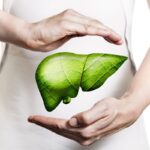[ad_1]
June 23, 2021 — Will differences in COVID vaccination rates across the country ultimately divide America?
The highly transmissible delta variant of the coronavirus is on the rise in the U.S., leading the CDC to predict that this concerning strain will soon predominate.
This outlook leads to the question about whether areas of the country with lower vaccination rates could experience worse outcomes. And if so, could the disparity lead to ‘two Americas’?
“COVID-19 and its variants, including the delta strain, will be a part of our lives for the foreseeable future,” David Hirschwerk, MD, an infectious disease expert at Northwell Health in Manhasset, N.Y., tells Medscape.
“So far, so good,” Hirschwerk adds, speaking to research looking at current vaccine efficacy against different strains of SARS-CoV-2. For the unvaccinated, however, “it is a major concern, because the current variants circulating are far more contagious and can make people much sicker.”
Theo Vos, MD, PhD, a Professor of Health Metrics Sciences at the Institute for Health Metrics and Evaluation (IHME) at the University of Washington, Seattle, agrees.
“The delta variant appears to be more infectious than its precursor variants and that means it may take less for explosive spread, particularly among populations with low coverage of vaccination,” he says.
Clear Differences?
Variants and vaccination rate differences will require vigilance, Hirschwerk says. “Hotspots are likely to occur in areas where vaccine uptake lags,” he warns.
When asked if a ‘two Americas’ scenario is possible, “there are clear patterns with lower willingness in the Midwest and Southwest [and] with a worse picture in rural postcodes,” Vos says.
Whether regional differences in vaccination rates will translate directly to differences in COVID-19 morbidity and mortality depends onseveral factors.
“Unfortunately, low willingness for vaccination is often combined with low adherence to precautionary measure” such as distancing and masks, for example, Vos says. “What mitigates this to some extent is that spread is easier in densely populated urban areas than in rural areas.”
Rating the Risk
As of June 11, an estimated 150 million American adults (45%) are fully vaccinated against the coronavirus, according to CDC data. But the rate in some states remains lower. For example, only 28% of residents of Mississippi are fully vaccinated, asare 30% in Alabama and 32% in both Arkansas and Louisiana.
Although the vaccination rate is slightly higher in Missouri at 36%, that state now reports the highest rate of new COVID-19 cases. In fact, during the week of June 13-20, one out of every 1,349 people in Missouri was diagnosed with COVID-19. .
“There are several counties in Missouri that are experiencing an increase in COVID-19 activity,” Lisa Cox, Communications Director for the Missouri Department of Health and Senior Services, tells Medscape in an email.
The department is collaborating with public health agencies in affected counties, and with the CDC to report variants and follow agency guidance, Cox says.
Furthermore, state health officials are working on more targeted efforts to engage businesses, employers, schools and churches to provide community-based vaccinations.
“We are also engaged in a targeted and aggressive state public education efforts encouraging those Missourians not yet vaccinated to do so,” Cox adds. “This is the ‘Show-Me State’ and Missourians are skeptical.”
Protecting the Unvaccinated
On a more positive note, the higher proportion of a population that is vaccinated, the lower the test positivity rate among the unvaccinated, new evidence suggests.
Researchers in Israel found that for every 20% increase in the proportion of residents vaccinated, the rate of positive tests among unvaccinated people dropped approximately twofold. The researchers compared rates in unvaccinated teenagers and children younger than 16 years to vaccinated people 16 to 50 to years old.
“The more people get vaccinated in a community, the more protected unvaccinated individuals in the same community seem to be,” lead author Oren Milman, tells Medscape in an email.
“This protection is in addition to the high protection to the vaccinated themselves,” adds Milman, a researcher at the Technion Institute of Technology in Haifa,Israel.
The study was published online June 10, 2021 in Nature Medicine.
Although naturally acquired immunity could have altered their results, Milman and colleagues adjusted for this potential confounder by including only communities across Israel where test positivity rates remained below 10%.
“Extrapolating from our results, communities with higher vaccination levels might enjoy substantially lower infection rates,” Milman says.
The research did not evaluate any specific SARS-CoV-2 variants, however. Also, actual infection rates could vary from the positive test results across communities and over time, another possible limitation.
“Although the observed vaccine-associated protection of the unvaccinated population is encouraging,” the researchers note, “further studies are required to understand whether and how vaccination campaigns might support the prospect of herd immunity and disease eradication.”
No Variance in Vaccine Advice
Even as the variants of concern change over time, protective measures do not. “The most effective means for combatting COVID transmission – irrespective of which variant is predominant – is by getting vaccinated,” Cox, from the Missouri Department of Health and Senior Services, says.
“Our biggest defender against the virus is vaccination,” Hirschwerk agrees. “We need to continue to ramp up vaccine efforts.”





















